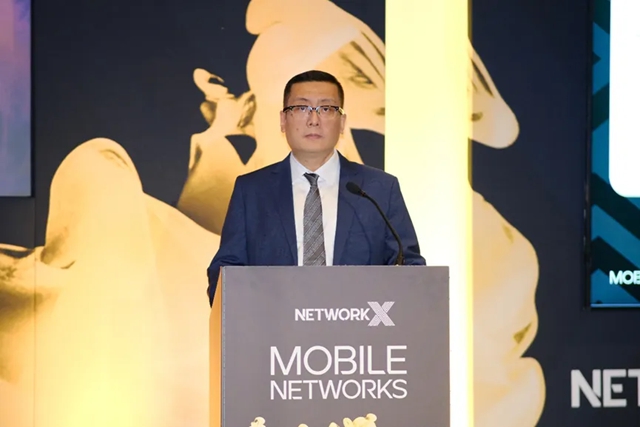Recently, Network X 2025 was held in Paris. During the summit, Yousuf, President of the CS&IMS Domain of Huawei Cloud Core Network Product Line, delivered a keynote speech titled "AI Empowers Innovation, AI Calling Builds the Entry of AI Service." He emphasized that in the AI era, operators can gradually roll out AI enhanced calling services on a converged fundamental voice network to seize the service entry. This gradual rollout can happen in lockstep with terminal readiness and ecosystem maturity.

Yousuf from Huawei delivering a keynote speech at Network X
With the evolution of industry standards and advancements in AI, the voice network is undergoing a fundamental transformation from a voice-only channel to a multimodal, intelligent platform. This enables operators to shift their networks from a "dumb pipe" to a "service entry." However, this transformation also poses higher requirements on network architectures. Yousuf noted that operators can prioritize the development of terminal-independent services on a converged fundamental voice network. This allows them to continuously foster innovative services while maintaining network stability.
Building a converged fundamental voice network
GSMA Intelligence's analysis shows that many operators still run multiple voice networks in parallel. To address the challenge posed by multi-generational networks, Huawei proposed a converged voice solution to enable 2G through 5G, along with fixed subscribers, to access a single voice network, which will aid the smooth phase-out of legacy CS and NGN networks to simplify the network architecture. As the industry's only containerized platform capable of carrying 2G through 5G voice services, Huawei's solution allows the hybrid deployment of virtual machine and bare metal servers. It ensures a seamless path for future-proof upgrades.
Phase 1: differentiated calling experience
AI technology is revolutionizing traditional voice calls with advanced noise reduction that intelligently filters out background noise and extraneous human voices in noisy environments for crystal-clear communication. This network-side silent calling creates an immersive and distraction-free environment, making calls far more engaging. By harnessing a fully converged network architecture, AI calling breaks through the limitations of network standards and geographic boundaries to deliver a seamless, high-quality calling experience to users anytime, anywhere.
Phase 2: voice calling assistant
With voice services decoupled from terminals, operators can seamlessly integrate AI into calling services. This integration allows the use of a smart voice assistant that improves every stage of the call journey. For example, it offers AI-powered call answering before calls, real-time translation during calls, and post-call summary. This scalable solution ensures rapid deployment across the entire user base, helping stabilize Minutes of Use (MoU), strengthen user loyalty, and reinforce the value of voice as a primary calling entry.
Phase 3: multimodal general assistant
Building on the "visible, clickable, and interactive" capabilities of DC technology, a multimodal general assistant transforms voice calls from basic information exchange into intelligent requirement resolution. Powered by the dual engines of DC and AI, the conventional model of "one number, one application" evolves into "one user, one agent." Through a unified operator code system, users gain one-click access to services across thousands of industries—bridging the gap between conversation and action. This allows for full-cycle task closure within a single call, and ushers in a new paradigm: Calling as a Service. In the AI era, operators are uniquely positioned to seize this service entry and redefine the future of voice communication.
Huawei is committed to collaborating with operators and ecosystem partners to make every call an AI-powered interaction, and every connection a catalyst for new business opportunities in the voice domain.

